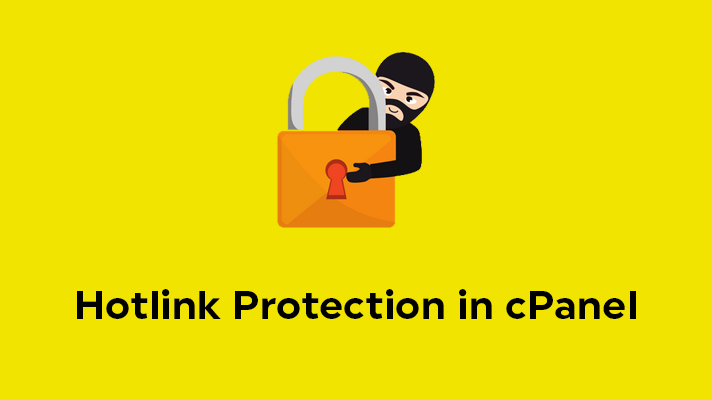
Hotlink Protection in cPanel – Hotlinking is when another website directly links to the files (like images, videos, or other media) hosted on your website, essentially using your bandwidth to serve their content. This can slow down your site, increase your hosting costs, and even affect your site’s performance. Luckily, cPanel makes it easy to set up Hotlink Protection, a feature that blocks unauthorized websites from using your resources. Here’s a straightforward guide to help you enable Hotlink Protection in cPanel.
Table of Contents
Why Enable Hotlink Protection?
Hotlink Protection is important because:
- It Saves Bandwidth: Since hotlinking uses your bandwidth, preventing it can reduce your usage and save on hosting costs.
- Improves Site Performance: If your resources are protected, you free up bandwidth for your own visitors, leading to better site speed.
- Protects Your Content: Hotlink Protection keeps other websites from displaying your content as their own, helping preserve your brand and images.
Accessing Hotlink Protection in cPanel
To start, log in to your cPanel account:
- In the cPanel dashboard, navigate to the Security section.
- Click on Hotlink Protection to access the settings page.
Configuring Hotlink Protection Settings
Here’s how to set up Hotlink Protection effectively:
- Enable Hotlink Protection: First, check that Hotlink Protection is enabled by clicking on the “Enable” button if it’s not already active.
- Specify Allowed Domains: Add your website’s domain(s) in the URLs to allow access field. This list should include your primary domain (like
example.com) and any other domains or subdomains that you control (e.g.,www.example.com,sub.example.com). These domains will still be able to access your files directly. - Block Direct Access to Specific File Types: In the Block direct access for these extensions field, specify which file types you want to protect. Common file types include:
.jpg,.jpeg,.png,.gif(for images).mp4,.avi(for videos).pdf(for documents)
- Redirect Requests to Another URL (Optional): You can choose to redirect users trying to access your content directly to a different URL, such as a custom error page or another page on your website. This is optional, but it can be useful if you want to inform others that the content is protected.
Testing Hotlink Protection
After enabling Hotlink Protection, it’s a good idea to test it to ensure it’s working as expected.
- Open a New Browser Window and try to access one of your protected images or files by directly entering its URL in the address bar.
- Check External Links: Visit a non-allowed domain and attempt to load one of your protected images or files. If Hotlink Protection is working, the content should not load on unauthorized sites.
Troubleshooting Hotlink Protection
If you experience any issues with Hotlink Protection:
- Clear Your Browser Cache: Sometimes your browser might cache previous content, so clear the cache to see if Hotlink Protection is active.
- Check File Types: Ensure that the file extensions you want to protect are correctly listed in the settings.
- Verify Allowed Domains: Double-check that your allowed domains are correctly listed to avoid blocking your own website.
Final Thoughts on Hotlink Protection
Enabling Hotlink Protection is a simple but powerful way to keep your website’s resources protected, save bandwidth, and improve performance. It takes just a few clicks in cPanel, but it can make a big difference in maintaining control over your content and ensuring your site’s resources are used only for your visitors.